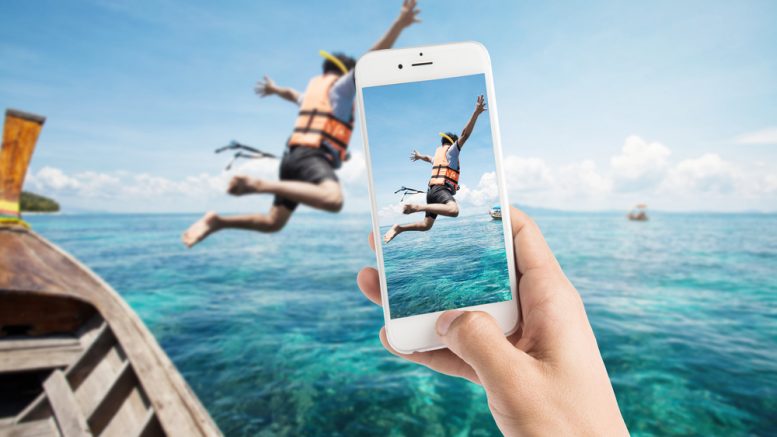Modern smartphones can now capture the kind of high-quality images that were once only possible on a traditional camera. Packed with powerful lenses and smart software, mass smartphone ownership means that professional pictures are now more accessible than ever before.
With new generations of digital natives, the online world is now inextricably woven into our culture. So, whether you want a new profile picture or to display products on a website, people expect high quality images. That’s why we’ve created a handy guide to take your smartphone photography to the next level.
- Switch to Manual mode
Packed with powerful AI, modern smartphones will allow you to take impressive shots just on automatic. But the mark of a pro is visually interesting, creative photography – and it’s difficult to achieve that if you’re not willing to experiment. By switching to Manual mode, you’ll find adjustable settings like ISO, shutter speed or aperture. By experimenting, you’ll soon find that your pictures stand apart.
- Try the new generation of zoom
Zooming in with a smartphone isn’t something we’d have recommended until recently. Even the best devices around could only offer pixelated, poor quality shots. But newer phone cameras allow up to 5x zoom without loss of clarity. And the next generation of zoom is worth exploring – including a feature that allows you to get a wider angle as you zoom out. For a demonstration of the latest functions, check out New phone, who dis.
- Use Night mode in low light
In poorly lit areas, many people resort to a flash – which can lead to a low-quality image. A better option is Night mode, which uses a long shutter speed to let more light into the camera for a more detailed image. Whether it’s a dark night or you’re in the shade on a sunny day, Night mode is your low light friend.
- Learn lighting effects
Light is such a fundamental part of photography but so easy to overlook. But if you learn to use light correctly, you’ll get some spectacular imagery. If you’re heading out in the evening look for an interesting light source – be that a streetlamp, lit shop front or even the reflection in a puddle. For a dramatic light trail effect from a passing car, set up your camera with the shutter speed to 1 second and keep ISO low to avoid graininess.
- Get that bokeh portrait
Bokeh describes a soft, out-of-focus background. On new phones, you’ll be able to achieve this in Portrait mode. You can also do it on Manual mode with a small depth of field. Simply use a low f-stop number (such as 1.8 or 2.8) or a wide aperture.
- Keep things on the level
For a professional picture, making sure your image lines up with the horizon is important. That used to mean carrying around a tripod, but this is no longer necessary. Many new phones come equipped with an electro-level meter which will do the hard work for you.
- Use a grid to improve composition
Some of the most iconic paintings and photographs work to layouts that are surprisingly mathematical. Whether it’s the Fibonacci Sequence or Golden Ratio, preset layout grids will help you think about professional composition no matter how casual the photo is. You’ll find different options in your phone’s camera settings.
- Use an extreme low angle shot
Sometimes the most effective tips aren’t always the most technical. If you want to get a perspective defying low angle without lying on the floor, simply hold your device upside down so that the phone camera is almost touching the ground. This will give your pictures a dramatic sense of perspective.
- Lock focus and exposure in place
If you’re taking a picture with a lot of movement (someone in a crowd, for example) your phone may get thrown off by lots of potential subjects in the foreground or background. Many smartphones will allow you to simply hold down on the screen and keep focus point and exposure point (i.e. what is being lit in the picture) centred exactly where you want it. As an extra hint, some devices will let you separate focal point from exposure point – meaning you can get really creative.
- Use maximum resolution
Even though many smartphones can achieve 40 megapixels in resolution, they may emerge from the box set much lower. This is because smartphones often have many functions which aren’t compatible with its cameras at maximum resolution. So, if you just want to take a professional and detailed picture, be sure to switch the cameras up to their full capabilities in your phone settings.
For video tutorials and more professional tips, check out O2 Sessions.



Be the first to comment on "10 Tips to Take Professional Photos with Your Smartphone"